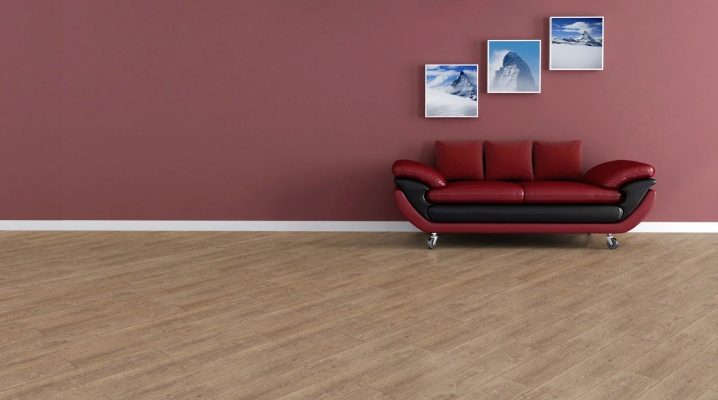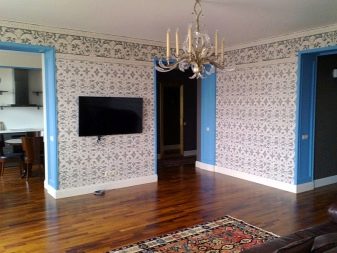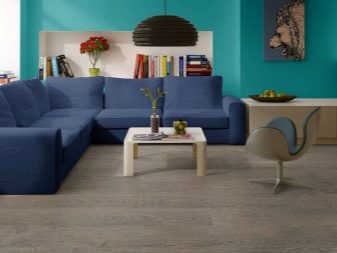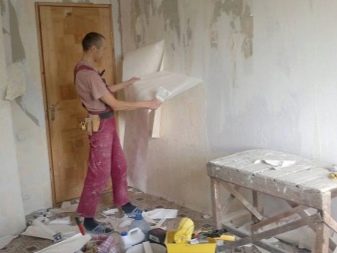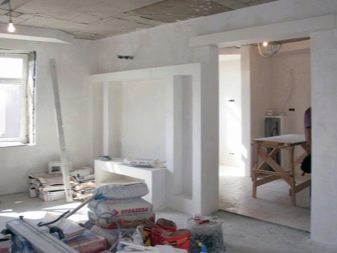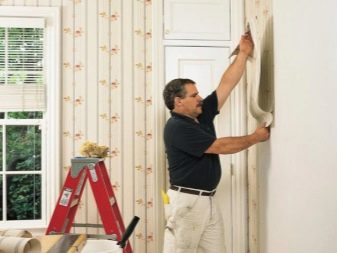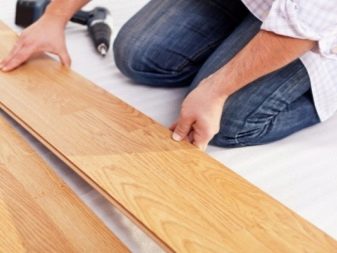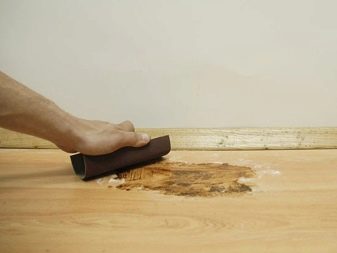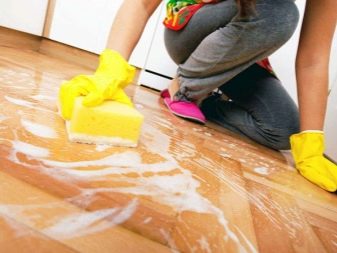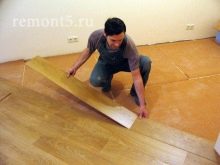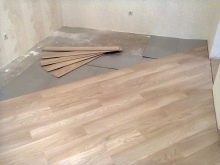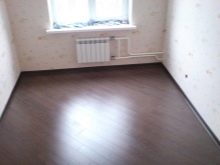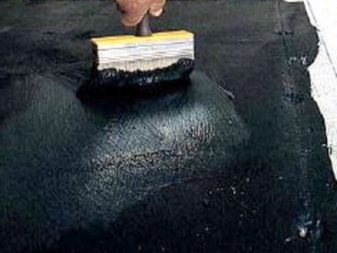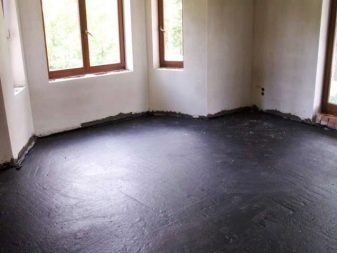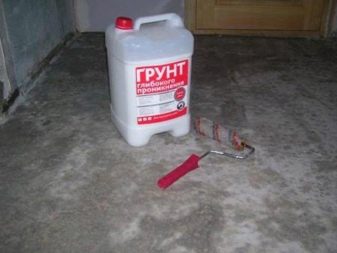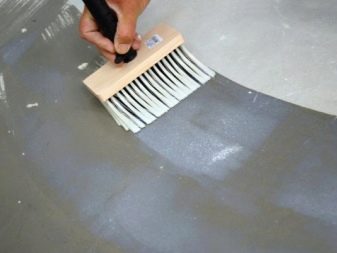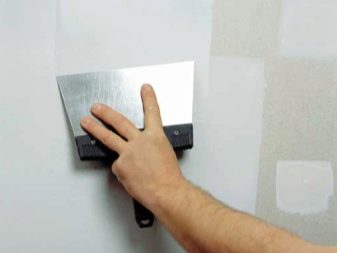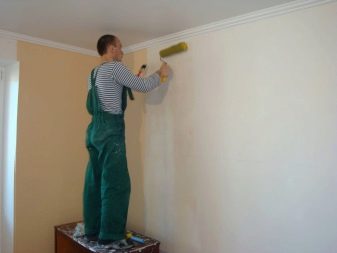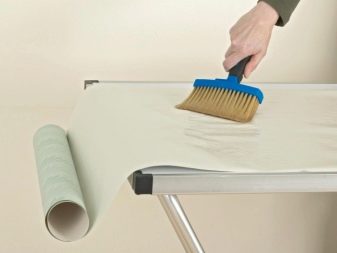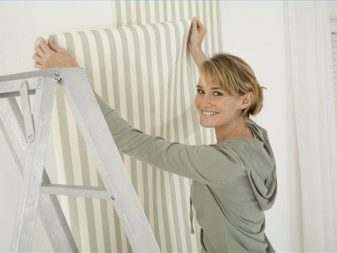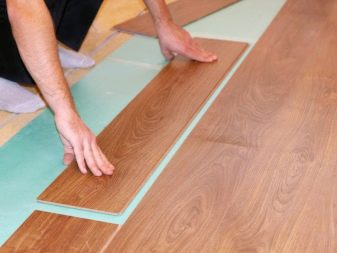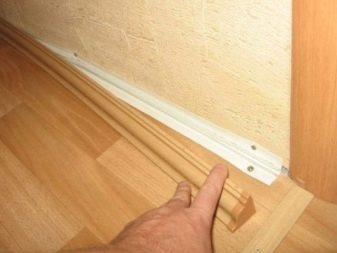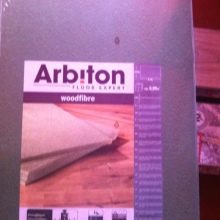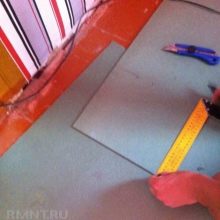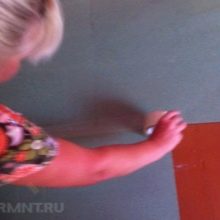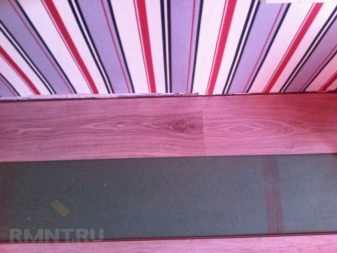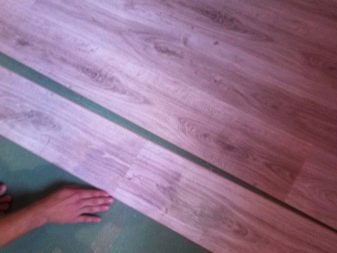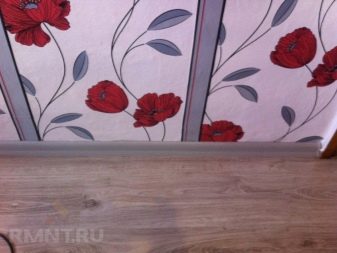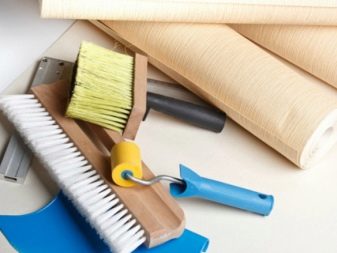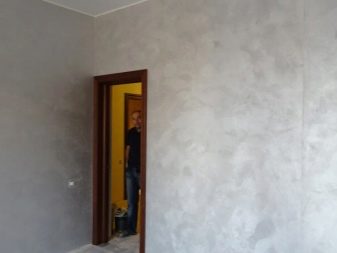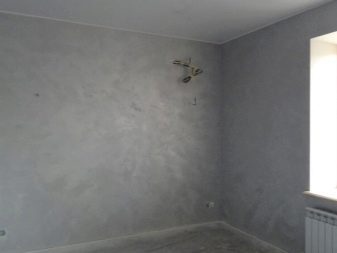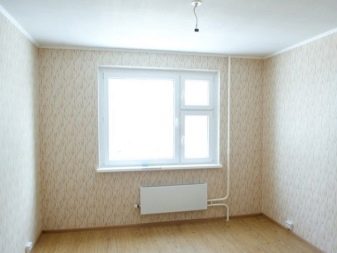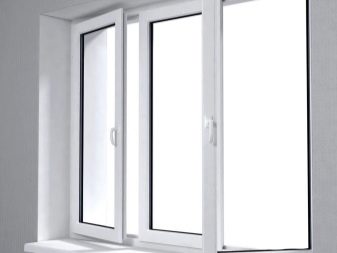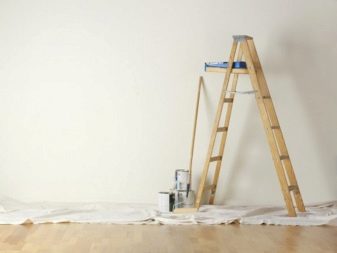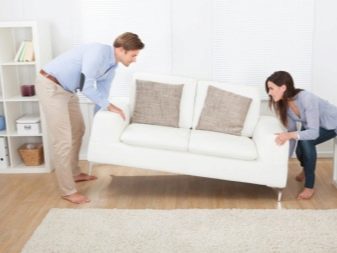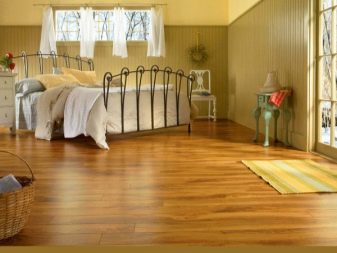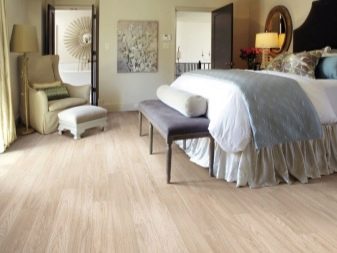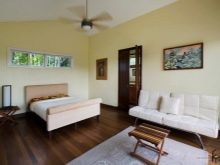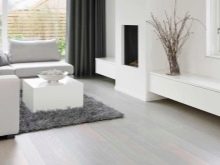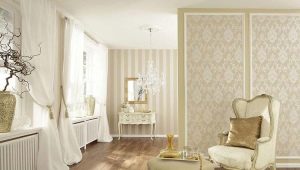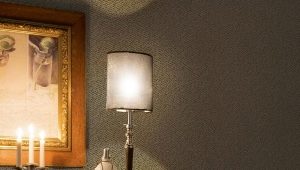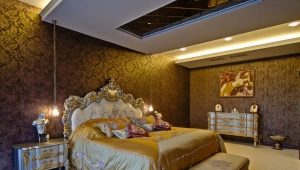What is first: wallpaper or laminate?
The need for redecoration with the replacement of all coatings in the room (floor, walls and ceiling) leads people to the natural question: where to start. For this you need to consider the advantages and disadvantages of various methods and the appropriateness of their use in your particular case in order to get the most beautiful and accurate result.
Pros and cons of both ways
Renovations in the apartment begin with the cleaning of all surfaces at the same time, in order to cope with most of the pollution at once. Further, it is necessary to make a fine finish, prepare all surfaces. And then selected materials begin to make registration.
And here the finishers and builders there is a rule - to repair from the top down. And in many cases it really works well.
The method, when previously glued wallpaper, and then laminate, has several advantages:
- During pasting and cutting wallpaper, you can damage the floor surface with glue, drop a spatula or incorrectly put a stepladder and scratch the laminate.
- Laminate is laid at some distance from the wall. This involves laying technology. Therefore, the risk to damage the wallpaper is minimal, in contrast to the fit of linoleum or carpet.
- The process of laying the coating does not provide a large amount of dirt and glue. Wallpapers will remain clean.
The only downside is that Drying walls with roll materials provides no drafts. In rooms with high humidity there is a risk of damage to the laminate during this period. It is better to cover it with a film, it will prevent corrosion of the upper layers of the coating.
From the above, we can conclude that when, on the contrary, laminate is laid in front, and then the walls are pasted over with canvases, the amenities are much less. First of all, the coating will get dirty, and it will be necessary to wash it even from minor impurities. And this is extra work. And, of course, the probability of damage is high. If you have chosen for finishing an apartment a budget laminate of a low strength class,you should not use this method of repair.
But still, under certain conditions, it is necessary to begin repairs exactly with the floor. If you have a small apartment or communal apartment, or there is no garage for storage, you need to arrange the furniture in the room as soon as possible. After the laminate layer has been put in compliance with all the rules and deadlines, you can at least bring some of the bulky furniture into place, moving it as needed.
First sticking
Stages of work:
- First you need to make a thorough cleaning of all construction debris and remnants of the previous coatings.
- We estimate the scope of work.
- If necessary, we do waterproofing of the floor using loose mixes or mastics.
- We produce roughing screed using self-leveling technology, laying cement mixture or adding claydite.
- We ground, we carry out a final coupler or we lay down special plates or a dry floor.
- Self-leveling floors must be primed at each stage.
- We fill the walls with a draft layer to eliminate large-scale irregularities.
- After drying, grind and primer the surface.
- Finishing plaster - a mandatory step.Wallpaper will hold better, will not shine spots and defects.
It is desirable to use a primer solution.
- Gluing selected materials. Wallpaper glued from the far visible angle or from the window. The adhesive composition is applied according to the recommendations for each type of roll materials. In the case of heavy wallpaper, walls are treated with the composition. Light and thin coatings are treated with a soft roller with glue and immediately applied to the site.
- Lay laminate.
- Install floor baseboards between wallpaper and floor.
Installation of laminate before sticking
First, again, you must perform all the preparatory work and bring the surface to the readiness to lay the laminate and glue the walls. After that, put a special layer of materials. This may be a cork, polyethylene foam, polystyrene foam, coniferous tiles or cork. They will play the role of a leveling and elastic substrate. Cut the coating should be carefully in place with a knife or special scissors.
Mark one of the walls with wedges (pieces of laminate, special slats). Laying laminate starts from the front page. Boards should not be adjacent to the wall.The distance can be within 10 millimeters.
The next lane falls from the last balance. The wedge locks snap into place and the boards are horizontal. Wedge locks on the first canvases in a row are inserted into the slot of the previous one.
Clearances are fitted with a bar and a hammer. The most recent stage of laying - trimming the finish row in width and length. The wedges are taken out. After that paste over the walls with selected canvases.
After gluing the wallpaper, install floor baseboards to close the gaps between the laminate and the walls.
How to install a floor plinth, see the following video.
Tips and tricks
Most of the repairmen and designers with experience will advise you the first method of finishing, when the wallpaper is first glued. But no one will forbid you, having studied all the pros and cons of both methods, to make a choice in favor of another method. In each situation it is advantageous to have one. Moreover, we often change the wallpaper a couple of times during the life of the floor covering.
The life of high-quality laminates reach 25 years. This is comparable with only a few types of wallpaper.But in any case it is easier to change the wall coverings and update the interior than to do a major overhaul.
So in this case, the wallpaper is applied with a ready floor, just provide for some problematic situations.
Below is a list of recommendations to help with the repair in one way or another:
- Preliminary training should be carefully considered. If you are not well plastering the walls and find it after laying the laminate, then paint the finishing materials for most of the surface. And the primer can leave difficult stains on the floor.
- In the case of top floor finishing, you should use a protective film during pasting. The price per meter of such material is small, but with an impressive area of your rooms, the purchase of additional canvas can cost you a pretty penny. And, of course, if you spill water while working with wallpaper, the film most likely will not save the laminate from swelling.
- After pasting the walls with wallpaper, let them dry for several days. Then ventilate the room, get rid of excessive humidity. This will save you from problems with the upper layers of low-class laminates.
- If you have already laid the floor, and only then stuck the wallpaper, cover the laminate with a film for the time the walls are drying. Low-grade floor coverings may corrode under the action of moisture, which is formed in a non-ventilated room for a long time.
- To glue the wallpaper when laid on the floor laminate need to carefully. Choose supports and ladders with rubberized smooth legs. This will protect you from slipping and prevent damage to the flooring.
- If you partially fill the room with bulky furniture, which you are going to move later, it is better to put it on a dense substrate.
The main recommendations on the selection of combinations of shades and patterns:
- With bright monochromatic walls, the floor can be bright and with a pronounced pattern.
- It is better to decorate dark rooms with light coatings.
- Cold rooms will become more comfortable with the use of warm shades of wood on the floor and walls.
- It is better not to choose wall coverings and laminate of the same color. They will merge and make the interior faded.
- When choosing materials, consider the lighting in your rooms. It can greatly affect the perception of color and good compatibility of the finishing coatings between themselves.
- If you choose a floor covering for a well-lit room, it is better to avoid dark shades. All dust will be visible.
- When staying in the house of children and pets constant dirt and debris can not be avoided. It is better to avoid the use of light shades in the decor of the flooring, so that it does not catch the eye.
- White laminate is very demanding for care and the surrounding interior.
